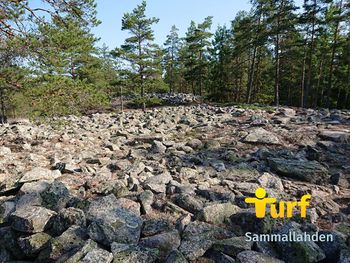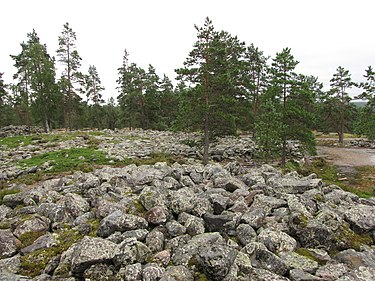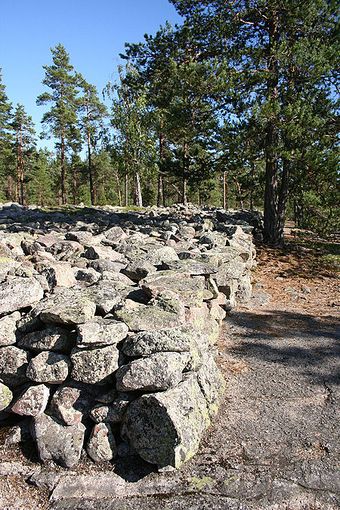Zone:Sammallahden
| Sammallahden | |
|---|---|
 Picture taken by xelryz | |
 | |
| Information | |
| Difficulty | |
| Location | Rauma, Lounais-Suomi, Finland |
| Surface | Stone |
| Created | 2015-02-26 21:40:00 |
| Trivia | #579 on UNESCO's World Heritage Site |
| Sammallahden at Turfgame.com | |
Sammallahden is a turfzone in the municipality of Rauma in the region of Lounais-Suomi (Southwestern Finland) in Finland. The zone is located in the province of Satakunta and it is counted as a world heritage site.
Placement[edit]
This zone is placed by Sammallahdenmäki (Bronze Age burial site, in Lappi the eastern part of the Rauma municipality.
Sammallahdenmäki[edit]
Sammallahdenmäki is a Bronze Age burial site in Finland near Rauma, in the region of Satakunta. The site includes 33 granite burial cairns dating back more than 3,000 years, to 1500 to 500 BC. Sammallahdenmäki is one of the largest, most complete, and most important Bronze Age sites in Fennoscandia, and was designated by UNESCO as a World Heritage Site in 1999.
The burial site is located on a long ridge in a remote area off the road between Tampere and Rauma. The 33 burial cairns making up the site are arranged into distinct clusters along the crest of the ridge. Each cairn was constructed from granite boulders quarried from the cliff face below the ridge or collected on site, in typical Bronze Age fashion. Of the 33 cairns, 28 are dated to the early Bronze Age, and the rest to the early Iron Age. Several different shapes and sizes of these cairns exist at the site. Two unusual cairns are the Huilun pitkä raunio ("long ruin of Huilu"), which is surrounded by an ancient stone wall, and the Kirkonlaattia ("Church Floor"), an unusual rectangular cairn covering 16 x 19 metres with a flat top.[2] The "Church Floor" cairn is the only one of its type found in Scandinavia.
The Sammallahdenmäki cairns were originally built to have a scenic view of the coast and the Gulf of Bothnia (a hallmark of early Bronze Age burial mounds), but over time, uplift has occurred and the ocean is no longer visible. The cairns may relate to rituals of sun worship, a religion that spread across Scandinavia during the Bronze Age, and demonstrates kin group land ownership, which is associated with the advent of farming.
Gallery[edit]
Nearby zones[edit]
- LapinKirkko
 (to the southeast)
(to the southeast)

